

|
Home Updates Hydros Cars Engines Contacts Links Contact On The Wire |
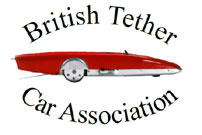 |
British Tether Car Association |
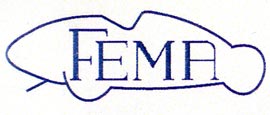 |
Aims and aspirations of the B.T.C.A.
|
Rationale: Great Britain was for many years one of the most prominent countries in the sport of model car racing. Some former British tether car racers such as Messrs. Drayson, Proctor, Cook and Dean actively participated in the formation and building of the F.E.M.A. organisation. Our aspiration is to continue this participation and to support International Tether Car Competitions.
A Brief History of the BTCA by David Giles

The British Tether Car Association was originally formed in 1978, with two principal aims. One to enable me to continue running cars officially in international competitions, and the second to ‘test the waters’ to see if there was still any interest in tether cars in the UK. I had been actively involved in running cars in European competitions whilst living and working in Germany in 1977 & 1978, and upon returning to the UK decided I would like to run for my country rather than as a member of the German club I had joined (Renngemeinshaft Schwartzwald). Although I had been welcomed with open arms by the good folk at Kapfenhardt, and given tremendous help and encouragement. In the UK I found a small flurry of interest in tether cars and in the fledgling BTCA. In total, I received correspondence from some 20 people.
At around that time, we ran a couple of cars at Brean Sands Model Makers Festival on a tennis court, a very professional centre pole being designed and built for the purpose by Tony Higgins. Also about 6 newsletters were sporadically produced. Familiar names associated with this project were Geoff Sheppard, Stan Barrett, Stuart Robinson, Tony Higgins and Jim Batten. I continued to race in international events (including becoming 5cc European Champion in 1979) until in 1981 a further work assignment took me to the Middle East and work which precluded any contact with the (then) Eastern Bloc. Stuart Robinson continued to pay the BTCA’s subscription to FEMA (Federation Europeenne du Modelisme Automobile – the sport’s European governing body) for a few years, and participated in one or two events until it became unviable.
After a conversation and some correspondence with Peter Hill, the BTCA name was resurrected for a time and appeared on the cover of several of the Retro Racing Club newsletters.
However, on 11.March.2000 a formal application to FEMA was made in order to re–join the international organisation, so after a lapse of some 15 years, the British Tether Car Association was re-activated with three of us wanting to run competitively in that season.
We provided the minimum number of officers – notably Roger James as Technical Secretary, and myself as FEMA point of contact. We then received the latest rules and regulations from FEMA, as well as details of how to register our cars - a process which had changed in the intervening years. We registered two cars in our first year to run in the (then) Class 5 (3.5cc) and set up the basic framework under which to operate, namely a list of interested parties, including their allocated racing number and the car registration number.
The first three members of the re-formed BTCA were:
|
|
David Giles: GB001. A control line enthusiast since the age of 10yrs, but always drawn to tether cars. Ran his own designed and built 2.5cc twinshaft car on the track at Mote Park in Kent shortly before its demise in the mid 1960s. Became involved in tether cars whilst working in Germany in the late 1970s. Rekindled the interest in competition some 20 years later. |
|
|
Stuart Robinson: GB002. Has been a tethered car and tethered hydroplane enthusiast for more years than most of us care to remember. He has held innumerable records in the tethered hydroplane field and has given many years of loyal service in various capacities to the hobby of model boat competition, both domestically and internationally. |
|
|
Roger James – Technical Secretary: GB003. A lifelong model builder, with model aeroplanes, steam locomotives and very competitive tethered hydroplanes to his credit (Roger was at that time 10cc World Champion). He also holds British tethered hydroplane records and is a respected tuner of model engines with an enviable track record, particularly in control line combat and team racing. Roger is an engineer of broad experience, thus making him an ideal person for the role of Tech. Sec. |
The BTCA moves on
|
The original three members were soon joined by Heather Robinson GB004 and June Heath GB006, both running what were then Class E5, open wheel ex Monza cars. These were fast evolving from a ‘beginners’ class into a very competitive racing category, but with rules that constrained the style of car. The WMCR adopted the 3.5cc Class in 2001 with David, Stuart, June and Heather all running 3.5cc open wheel cars. The following year FEMA renamed their classes with these cars becoming E3 and the 10cc cars E5. Right: Heather Robinson's, Stelling based Monza car |
|
David and June concentrated on developing cars for this class to such an extent that June held the British WMCR record until 2015 while David still holds the FEMA version. Just to confuse matters further the open wheel category became Class 3b and the streamlined cars Class 3.
|
|
|
The membership of the BTCA continued to grow with Stan Barrett (GB005) opting for the 1.5cc and 2.5cc classes. Stan held the 1.5cc record until 2014 and the 2.5cc record until 2018. Left: Stan and his Ekstrand 1.5cc cars |
Members travelled to a number of meetings in Germany, France, Sweden and Switzerland and for the first three years David Giles provided a quarterly account of BTCA and FEMA news, events and development work on his cars that was published in the Retro Racing Club magazine. This enabled a wider group within the tethered car movement to know what was happening in the modern scene and appreciate what was involved in competing at this level.
|
|
As a direct result of the material David published, Hugh and Lynn Blowers made the trip to the 2004 European Championships in Basel as interested spectators and as it turned out, the only British visitors. The membership was expanding further with long-term hydro competitor Steve Turley GB008, competing with 5cc cars, which he continues to run and Dave Cunliffe GB009 with a 10cc car. The 2005 European Championships in Lyon saw the largest British contingent since the late 1950s, again with Hugh and Lynn Blowers spectating, which was the catalyst for the setting up of OTW. Left: David Giles assisting Dave Cunliffe while Steve Turley looks on |
|
The lack of a track in the UK and the necessity to travel into Europe to run means that British participation will always be limited, yet the British team grew further at Lyon in 2008 with another ex hydro competitor, Oliver Monk GB010 joining, initially in the 10cc class with Roger James’s Denneler based car. Oliver is a really enthusiastic competitor as well as a prodigious builder and promoter of the sport, recently taking over as FEMA point of contact from David Giles and technical Secretary from Roger James, both now retired from active competition. In addition, Oliver was voted in as FEMA Technical Secretary in 2015, a real fillip for the BTCA. |
|
|
|
Oliver was directly responsible for persuading Hugh Blowers GB011 to split his time between hydro lakes and the track, initially with an aged 1.5cc car. It was down to Oliver’s enthusiasm and help that Hugh and Oliver, accompanied by Lynn and Debbie were the first from Britain to compete at a World Championships since 2004. Oliver's son Aaron GB012 was the next to join, specialising in the 1.5cc class and has achieved a landmark for a British competitor in winning the 2014 Grand Slam in that class and a trip to compete in Australia. For this trip Oliver and the most recent member Debbie Monk GB014 who has been running a new car run in the 1.5cc class joined Aaron to race at the Brisbane and Sydney International meetings. Left: Debbie, Oliver and Hugh, Basel 2013 |
|
In 2017, the 'fast lady' joined the ranks of the BTCA as GB015 running a decidedly aged 1.5cc car that she is spannering herself, competing in her first ever European Championship with another personal best performance. A number of new and second-hand cars have been making their way to the UK over the last couple of years as well as two built from scratch here. Britain now has representatives and cars registered in all the classes except 3b, the most healthy it has been for a while. Right: Lynn Blowers with her Class 1 car at Kapfenhardt |
|
Registration of a car is initiated by contacting the BTCA for the allocation of a racing number – "GBxxx" – and by submission of a ‘Daten Erfassungsblatt’ (specification data sheet) that is filled in and submitted to the FEMA Technical Secretary by the BTCA Technical Secretary after he has scrutineered the car and it has satisfied the technical specification and design criteria for the relevant class. The car then receives a registration number, which has to be engraved on the bottom pan, and a racing licence.
There is no subscription to the BTCA, but there is an annual fee per driver of 10 Euro and an annual national fee of 100 Euro, to be paid to the FEMA treasurer around the start of the racing season. The national fee is simply divided by the number of active drivers, collected by the FEMA point of contact and passed directly to the FEMA secretary.
For further information: email:
flatbadger@btinternet.com or oliver.monk@btinternet.comBTCA Gallery
|
|
|
|
|
OTW & BTCA at Lyon 2005 |
Stuart Robinson, June Heath, Dave Cunliffe,
|
Aaron Monk, David Giles, June Heath, Oliver
Monk,
Steve Turley & |
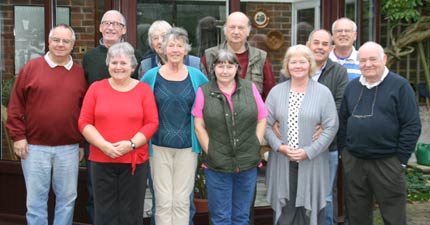 |
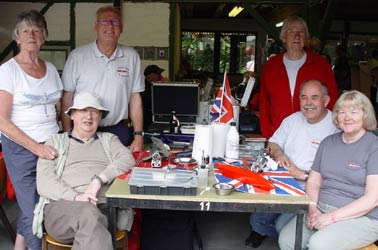 |
| BTCA, meeting 2013 |
June Heath, Steve Turley, Hugh Blowers,
David Giles, |
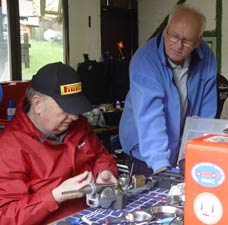 |
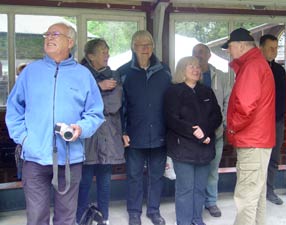 |
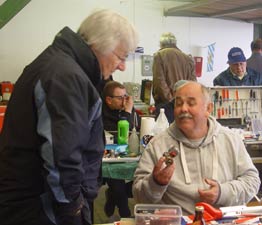 |
| Kapfenhardt 2016 | ||
©copyrightOTWandDavidGiles2014